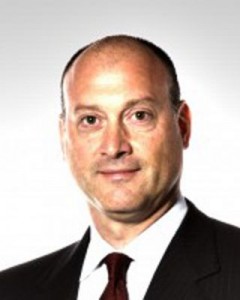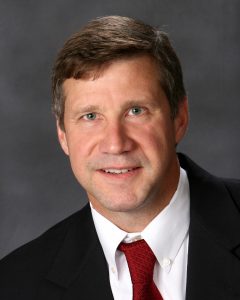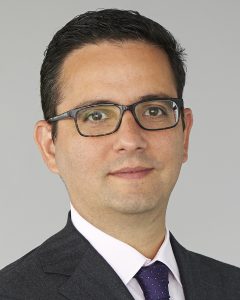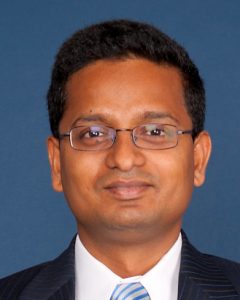
Peter DeCaprio discusses Crow Point Partners. The firm started out using a fundamental-strategy approach before developing new products that are driven by a quantitative research front end. According to Mr. DeCaprio, the combination of fundamental analysis with the quantitative research front end is powerful because each approach has deficiencies. Fundamental analysts can be emotional, which can lead to irrational decisions, while the quantitative research is blind and dispassionate. When building portfolios, Mr. DeCaprio begins with a 10,000-stock universe and ranks them by region and industry. The stocks are then ranked within each group, with the top-ranked names becoming investments. The fundamental analysts will then look at the names generated by the quantitative model and kick names out of the portfolio based on their insights.
Full interview HERE.
President and CIO Jim Wright of Harvest Financial Partners says Apple Inc. (NASDAQ:AAPL) is one of his largest holdings. Though new to the dividend game, Mr. Wright believes Apple is committed to returning money to shareholders.
Apple is a company that we really like. It’s one of our largest holdings at the firm, and we still think it represents terrific value. The stock price is, right now, in the low $90s, and it has a dividend yield of about 2.5%.
[…] While they don’t have a long history of paying dividends, they have increased the dividend fairly significantly in that period of time. It’s up about 50%. We think management is very committed to returning money to its shareholders through the dividend and a large stock buyback, and we like that.
The stock is in the low $90s, and just like T. Rowe Price, it is a net cash company. Apple does have some debt, but they have a lot of cash on the balance sheet. The net cash position is nearly $30 a share. You are getting the underlying business for $70, if you tax adjust the cash. They’ll probably earn somewhere around $8 this year. So you are paying a single-digit multiple.

Brian J. Frank discusses Frank Capital Partners LLC and the Frank Value Fund. Mr. Frank looks for companies that are both cheap and high quality. In order to find stocks that fit both criteria, Mr. Frank casts as wide of a net as possible by being willing to go anywhere in the stock market. He also believes in maintaining a concentrated portfolio of best ideas so that each investment is a material portion of the portfolio. In addition, once an investment is made, Mr. Frank thinks it is important to hang on and be patient. Since Mr. Frank doesn’t look at value alone, he is able to hold cash if he isn’t finding stocks that meet his criteria, and as of the end of the first quarter, he was holding 65% cash.
Full interview HERE.
Dan Davidowitz and Damon Ficklin discuss Polen Capital and the Focus Growth Strategy. The idea behind the strategy is that setting high thresholds for companies and only investing in the best will result in superior returns. Mr. Davidowitz and Mr. Ficklin screen companies on five criteria: balance sheets with cash and low debt, more free cash flow than they could use, returns on capital north of 20%, profit margins that are at least flat and real organic revenue growth. In addition, they are looking for a market cap of $4 billion or higher. Mr. Davidowitz and Mr. Ficklin aim to generate returns from compounded earnings growth rather than buying and selling. For this reason, they have a low turnover and maintain a long time horizon for their investments.
Full interview HERE.

Jeffrey R. Erickson discusses Abbot Downing and the Abbot Downing Select Global 25. Mr. Erickson focuses on equities and fixed income using a core-beta satellite-alpha approach. This approach involves buying beta relatively inexpensively and using satellite managers to provide alpha. The portfolio is concentrated with the 25 best ideas and has low turnover to make it efficient in terms of taxes and fees. Currently, about 40% of the portfolio is outside of the U.S.; however, Mr. Erickson doesn’t just consider where a company is domiciled but also where their primary business is. Mr. Erickson looks for high-quality companies, which he defines as companies with a strong return on capital and with managers who are good stewards of that capital.
Full interview HERE.
President and CIO Jim Wright of Harvest Financial Partners says Walt Disney Co (NYSE:DIS) is an example of how it pays to be a patient and opportunistic investor, as this is a company with strong franchises that is committed to paying and increasing its dividend.
This is a company that we have known well for a long time, and obviously, a lot of people know Disney. But it’s a type of company we wanted to own. It has strong franchises.
For example, they just expanded their theme-park business into China, and now have theme parks throughout the world. They own ESPN, which is the most valuable cable brand out there. They also own ABC. And of course, the movie studios led by the Disney brand. They also have Pixar and Marvel. So it’s a company that is just full of wonderful brands and great franchises, and it’s run by Bob Iger. He has been a terrific CEO, and we like the management that Disney has.
This is a company that we have identified and watched for a while. At some point last year, the stock was at $110 or $120, and it just didn’t represent really good value to us selling at a fairly large premium to the market. But we’ve done our work, and we were ready. Then, fortunately for us, in February, they disappointed some investors when they released earnings and showed a modest decline in ESPN subscribers. So after the earnings announcement, the stock dropped into the mid to high $80s, and we jumped in and initiated a position. Right now, the stock is selling in the mid to low $90s. We would be excited to buy more in the $80s, but it’s not overly expensive here.
We have a company that is selling probably about 15 times forward earnings. So we get all of those terrific businesses at less than a market multiple. Disney also provides a 1.5% dividend yield, and it is a dividend that the company has been raising regularly. So Disney exemplifies the characteristics we have mentioned: a high-quality company committed to paying and increasing its dividend. Because we were patient and waited, we finally got our chance to purchase it. We certainly think it has 20% to 30% upside from these prices.
Aaron Garcia and Faraz Farzam discuss their investment strategy. Mr. Garcia and Mr. Farzam aim to identify great businesses that are trading at significant discounts to intrinsic value. They have a five-pillar process to uncover those situations, which focuses on strong economic traits, economic moats, growth, management teams and valuation.
Full interview HERE.

Albert Grosman discusses ClearBridge Investments, LLC and the ClearBridge Small Cap Fund. Mr. Grosman’s goal for the fund is to create a resilient portfolio that has the potential to outperform long term across various market conditions. The process is valuation-driven and uses discounted cash flow models. Mr. Grosman focuses on what the market expectations are for a stock and what his variant perception is compared to the market. Using the Russell 2000 as the fund’s benchmark, Mr. Grosman invests across the small-cap universe and achieves diversity by investing in deep-value, steady as well as high growth businesses. Mr. Grosman also aims to understand the risk he is taking. By utilizing a probabilistic approach, he is able to determine where an invest lies on the continuum of risk.
Full interview HERE.

Vijay Kumar covers medical devices and supplies. Dr. Kumar says pricing has been stable and volumes have improved due to the ACA and the increased access to health care, as well as lower unemployment levels. He says the industry has undergone a structural change over the last five years: There’s been a number of management changes, there are new growth verticals to look forward to and a number of new products. Dr. Kumar shares which companies he likes right now and the products he finds attractive.
Full interview HERE.

Sung Ji Nam covers life science tools and diagnostics. She says the life science tools sector will likely grow steadily over the longer term, and it is more of a defensive industry. However, certain macro issues could create some headwinds for parts of the industry in the near term. For diagnostics, Ms. Nam says the outlook is a bit more mixed. She says the biggest concern for that industry is whether there is sufficient incentive or ROI to invest in innovation, and that in the U.S. the biggest overhang remains reimbursement.
Full interview HERE.